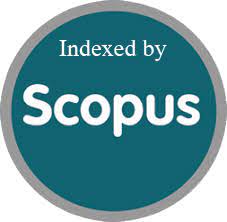A systematic review and analysis of medication education for medication misuse in children
DOI:
https://doi.org/10.52783/jns.v14.1584Keywords:
Medication, Education, Children, ReviewAbstract
The research carefully assessed evidence of educational strategies concerning prescription and nonprescription drugs for kids in school. Search criteria concentrated on demographic schooling, kids in school, and pharmaceuticals. Research was omitted if it pertained to a specific illness state, type of drugs, substances of misuse, or illegal substances. The data extraction encompassed study design, position, educational treatment and time frame, study techniques, and principal findings. The research identified 15 studies corresponding to 9 distinct programs. Six initiatives were recognized in the gray research. Projects varied from solitary sessions to nationwide initiatives. Quantitative research demonstrated enhancements in understanding, medicine literacy, and trust. Implementing medication teaching initiatives relied on the educator's confidence and convictions about the security of medications. Reliable pharmaceutical education options exist and have demonstrated an enhancement in knowledge among learners. A necessity persists for comprehensive implementation and assessment strategies. Methods and resources exist to execute initiatives within neighborhoods to enhance medication education among kids. Structures ought to be employed to improve the execution of successful health promotion programs regarding prescription drugs for pupils in school.
Downloads
Metrics
References
Moore‐Hepburn C, Rieder M. Paediatric pharmacotherapy and drug regulation: Moving past the therapeutic orphan. British Journal of Clinical Pharmacology. 2022 Oct;88(10):4250-7.
Jeganathan S, Lakshminarayanan AR, Parthasarathy S, Khan AAA, Sathick KJ. OptCatB: Optuna hyperparameter optimization model to forecast the educational proficiency of immigrant students based on CatBoost regression. Journal of Internet Services and Information Security. 2024;14(2):111-132. https://doi.org/10.58346/JISIS.2024.I2.008
Nash AP, Harden A, Sheth RK. The Ethical Complexity of Medical Decision Making in the Adolescent Oncology Patient. Current Oncology. 2024 Jul 24;31(8):4158-64.
Sumithra S, Sakshi S. Exploring the Factors Influencing Usage Behavior of the Digital Library Remote Access (DLRA) Facility in a Private Higher Education Institution in India. Indian Journal of Information Sources and Services. 2024;14(1):78-84. https://doi.org/10.51983/ijiss-2024.14.1.4033
Winer JM, Yule AM, Hadland SE, Bagley SM. Addressing adolescent substance use with a public health prevention framework: the case for harm reduction. Annals of medicine. 2022 Dec 31;54(1):2123-36.
Leitner M, Frank M, Langner G, Landauer M, Skopik F, Smith P, Akhras B, Hotwagner W, Kucek S, Pahi T, Reuter L, Warum M. Enabling exercises, education and research with a comprehensive cyber range. Journal of Wireless Mobile Networks, Ubiquitous Computing, and Dependable Applications. 2021;12(4):37-61.
Lytras MD, Serban AC, Ruiz MJ, Ntanos S, Sarirete A. Translating knowledge into innovation capability: An exploratory study investigating the perceptions on distance learning in higher education during the COVID-19 pandemic-the case of Mexico. Journal of Innovation & Knowledge. 2022 Oct 1;7(4):100258.
Wu Z. Integrating Biotechnology Virtual Labs into Online Education Platforms: Balancing Information Security and Enhanced Learning Experiences. Natural and Engineering Sciences. 2024 Sep 1;9(2):110-24. https://doi.org/10.28978/nesciences.1569211
Nawaz S. Rethinking classifications and metrics for problematic smartphone use and dependence: Addressing the call for reassessment. Computers in Human Behavior Reports. 2023 Sep 4:100327.
Khalikova R, Jumaeva F, Nazarov A, Akmalova M, Umarova F, Botirov E, Khaydarova L, Abduraimova M. Integrating environmental conservation and sustainability into coal mining education. Archives for Technical Sciences. 2024 Dec 24;2(31):259-68.. https://doi.org/10.70102/afts.2024.1631.259
Adachi K, Sakai N, Kimpara K, Arizono S. The effect of physical therapy integrated with pharmacotherapy on tension-type headache and migraine in children and adolescents. BMC neurology. 2024 Sep 4;24(1):316.
Mansour R. A conceptual framework for team personality layout, operational, and visionary management in online teams. Global Perspectives in Management. 2024;2(4):1-7.
Deihim J, Sadeghi T, Rezaei S. Role of information technology and information systems in the process of improving the quality of education manager’s decisions. International Academic Journal of Organizational Behavior and Human Resource Management. 2014;1(1):54-70.
Lee CC, Enzler CJ, Garland BH, Zimmerman CJ, Raphael JL, Hergenroeder AC, Wiemann CM. The development of health self-management among adolescents with chronic conditions: an application of self-determination theory. Journal of Adolescent Health. 2021 Feb 1;68(2):394-402.
Ramachandran S. Comparative Analysis of Antibiotic Use and Resistance Patterns in Hospitalized Patients. Clinical Journal for Medicine, Health and Pharmacy. 2023 Oct 9;1(1):73-82.
Shahzad M, Qu Y, Zafar AU, Appolloni A. Does the interaction between the knowledge management process and sustainable development practices boost corporate green innovation?. Business Strategy and the Environment. 2021 Dec;30(8):4206-22.
Saidova K, Ashurova M, Asqarov N, Kamalova S, Radjapova N, Zakirova F, Mamadalieva T, Karimova N, Zokirov K. Developing framework for role of mobile app in promoting aquatic education and conservation awareness among general people. International Journal of Aquatic Research and Environmental Studies. 2024;4(S1):58-63. https://doi.org/10.70102/IJARES/V4S1/10
Vaezzade SR. Relation among self-regulating learning recognizing alternatives and creativity by educational performance in PE student. International Academic Journal of Humanities. 2016;3(1):118-124.
Downloads
Published
How to Cite
Issue
Section
License

This work is licensed under a Creative Commons Attribution 4.0 International License.
You are free to:
- Share — copy and redistribute the material in any medium or format
- Adapt — remix, transform, and build upon the material for any purpose, even commercially.
Terms:
- Attribution — You must give appropriate credit, provide a link to the license, and indicate if changes were made. You may do so in any reasonable manner, but not in any way that suggests the licensor endorses you or your use.
- No additional restrictions — You may not apply legal terms or technological measures that legally restrict others from doing anything the license permits.










